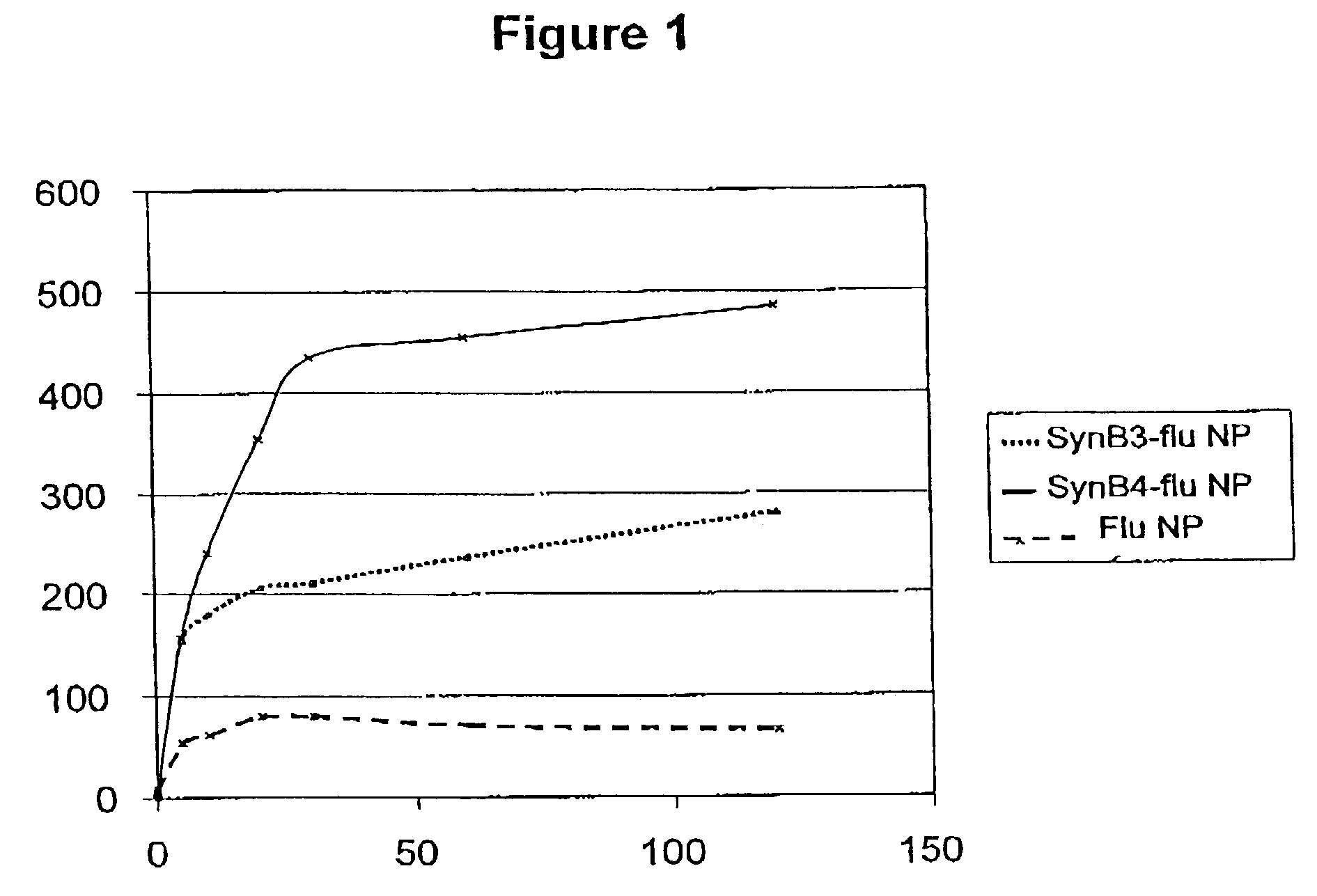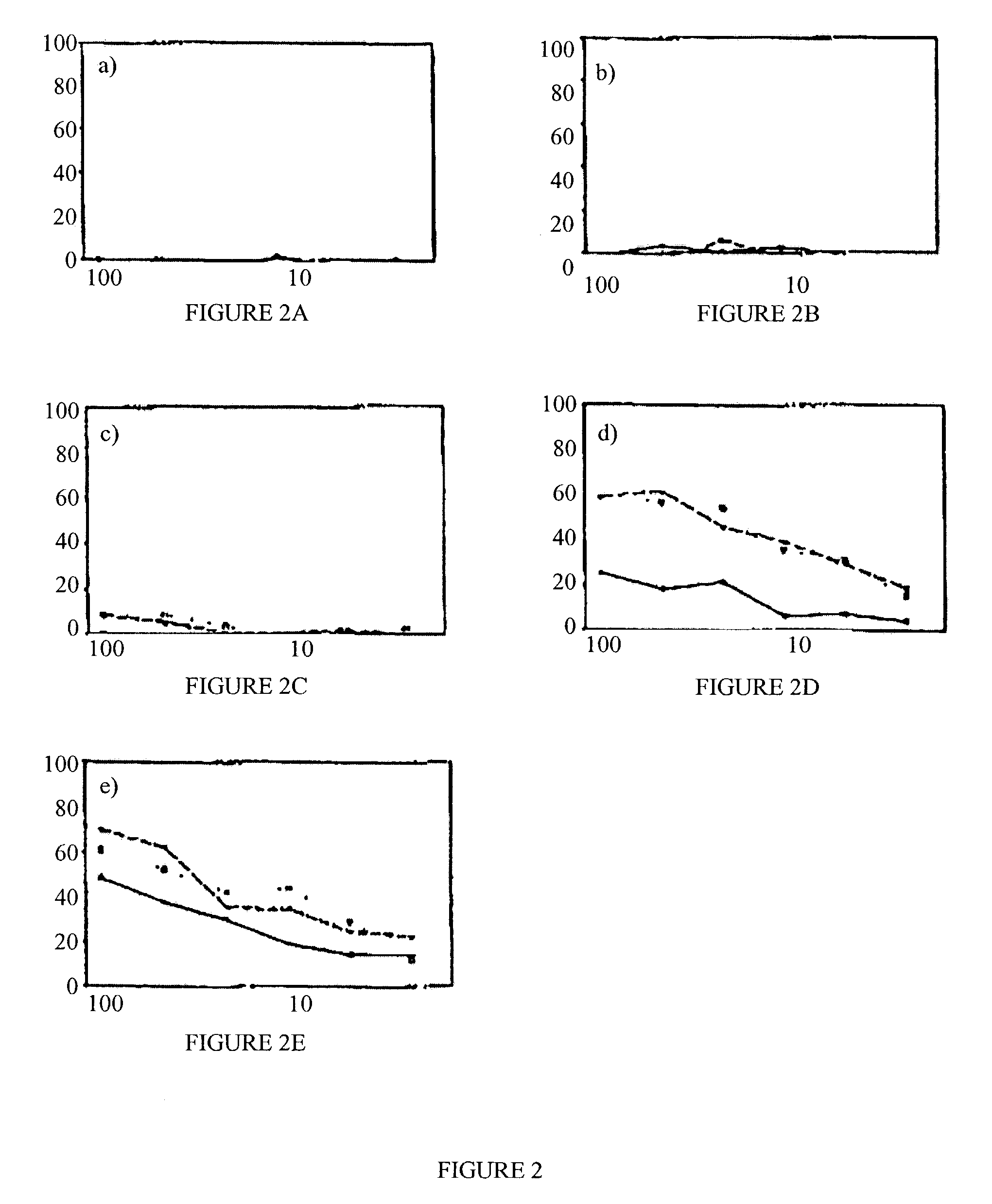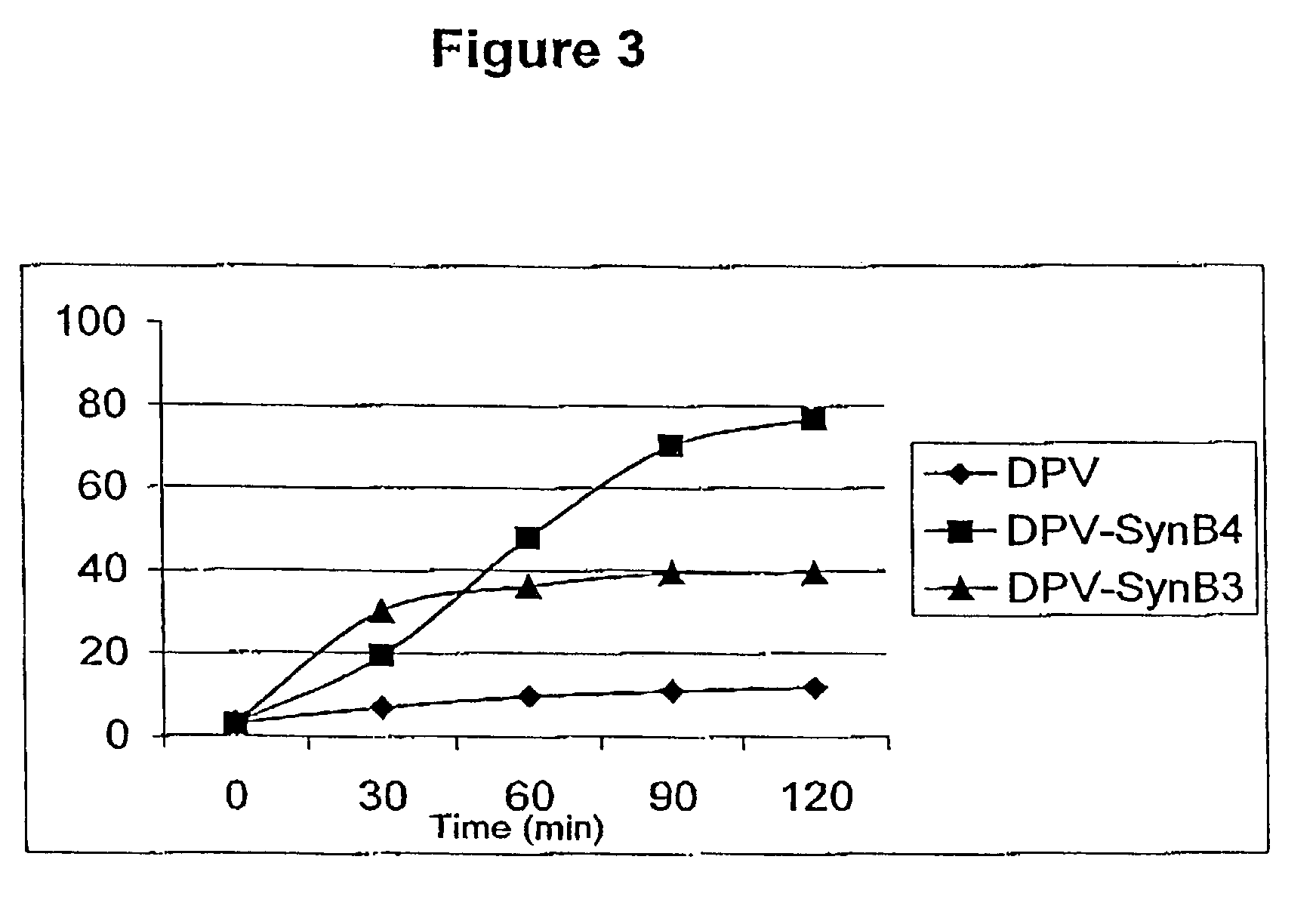Use of peptide vectors to improve the immune response to antigens
a technology of peptides and antigens, applied in the field of immunology and vaccine technology, can solve the problems of insufficient response, poor in vivo efficiency of approaches, and long process for efficient vaccines against hiv infection, and achieve the effect of facilitating ctl response and enhancing ctl respons
- Summary
- Abstract
- Description
- Claims
- Application Information
AI Technical Summary
Benefits of technology
Problems solved by technology
Method used
Image
Examples
example 1
[0090]
CompoundSequenceName(I)TYQRTRALV (SEQ ID NO:20)Flu NP(II)AWSFRVSYRGISYRRSR-TYQRTRALVSynB4 / flu NP(SEQ ID NO:21)(III)RRLSYSRRRF-TYQRTRALVSynB3 / flu NP(SEQ ID NO:22)
[0091]Cell Uptake
[0092]Flu NP epitope was conjugated to SynB3 and SynB4 vectors. First, we compared the cell uptake of free and conjugated flu NP. Flu NP epitope was conjugated to SynB3 and SynB4 vectors and labelled with a fluorescent group (NBD). The compounds were incubated with K562 cells for various times and the cell uptake was measured using flow cytometry.
[0093]Incubation of the cells with free flu NP epitope resulted in a very low uptake as judged by the mean of fluorescence intensity (FIG. 1). However, coupling the flu NP peptide antigen with either SynB3 or SynB4 vectors increased significantly its cell penetration. The cell penetration was very rapid in the first 30 min and then plateau thereafter. The enhancement of internalisation was 2- to 5-fold depending on the vector used....
example 2
Delivery of a Recombinant Protein Antigen
[0097]
CompoundSequenceName(IV)RDPVRDPV(V)AWSFRVSYRGISYRRSR-rDPVSynB4 / rDPV((SEQ ID NO:18)-rDPV)(VI)RRLSYSRRRF-rDPVSynB3 / rDPV((SEQ ID NO:11)-rDPV)
[0098]Cell Uptake
[0099]We also coupled rDPV protein with SynB3 and SynB4 vectors. The coupling procedure is described in the Protocols. First, we compared the cell uptake of free and coupled rDPV. The rDPV was labelled with a fluorescent group (NBD) in order to measure its uptake. The compounds were incubated with K562 cells for various times and the cell uptake was measured using flow cytometry.
[0100]Incubation of the cells with free rDPV resulted in a very low uptake as judged by the mean of fluorescence intensity (FIG. 3). However, coupling the rDPV protein with either SynB3 or SynB4 vectors increased significantly its cell penetration.
[0101]The enhancement of internalisation was 3- to 7-fold depending on the vector used. As observed for the peptide epitope, SynB4 vector enhanced rDPV cell penetrat...
PUM
| Property | Measurement | Unit |
|---|---|---|
| volume | aaaaa | aaaaa |
| pH- | aaaaa | aaaaa |
| β-stranded antibiotic | aaaaa | aaaaa |
Abstract
Description
Claims
Application Information
 Login to View More
Login to View More - R&D
- Intellectual Property
- Life Sciences
- Materials
- Tech Scout
- Unparalleled Data Quality
- Higher Quality Content
- 60% Fewer Hallucinations
Browse by: Latest US Patents, China's latest patents, Technical Efficacy Thesaurus, Application Domain, Technology Topic, Popular Technical Reports.
© 2025 PatSnap. All rights reserved.Legal|Privacy policy|Modern Slavery Act Transparency Statement|Sitemap|About US| Contact US: help@patsnap.com



